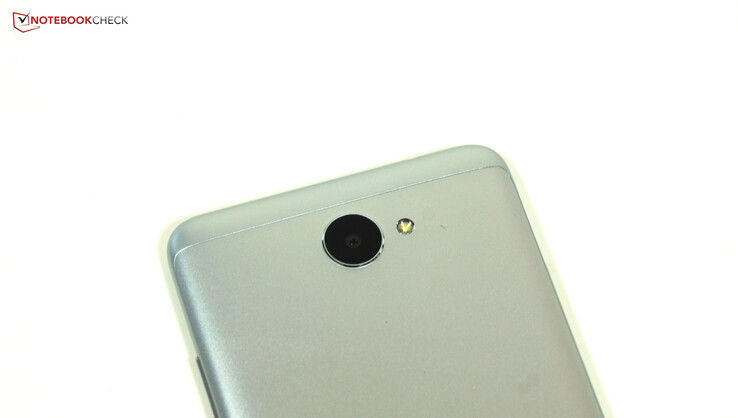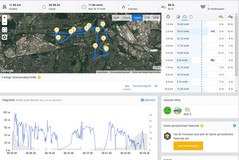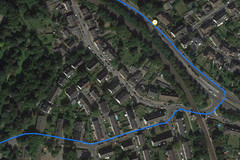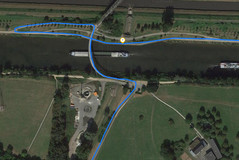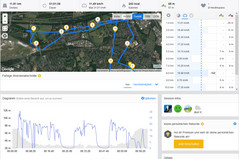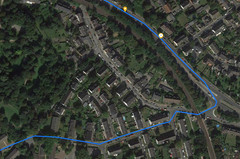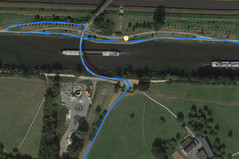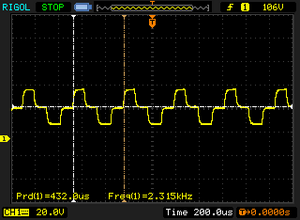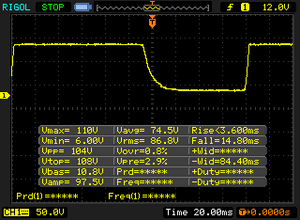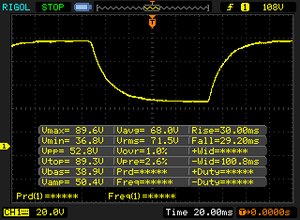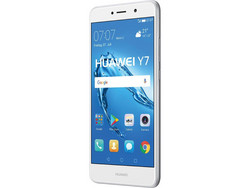Breve Análise do Smartphone Huawei Y7 (2017)
Os Top 10
» Os Top 10 Portáteis Multimídia
» Os Top 10 Portáteis de Jogos
» Os Top 10 Portáteis Leves para Jogos
» Os Top 10 Portáteis Acessíveis de Escritório/Empresariais
» Os Top 10 Portáteis Premium de Escritório/Empresariais
» Os Top 10 dos Portáteis Workstation
» Os Top 10 Subportáteis
» Os Top 10 Ultrabooks
» Os Top 10 Conversíveis
» Os Top 10 Tablets
» Os Top 10 Smartphones
» A melhores Telas de Portáteis Analisadas Pela Notebookcheck
» Top 10 dos portáteis abaixo dos 500 Euros da Notebookcheck
» Top 10 dos Portáteis abaixo dos 300 Euros
Size Comparison
| Networking | |
| iperf3 transmit AX12 | |
| Samsung Galaxy J7 2017 | |
| Sony Xperia L1 | |
| LG X power2 | |
| Huawei Y7 | |
| Huawei Y6 2017 | |
| Lenovo Moto E4 Plus | |
| iperf3 receive AX12 | |
| Samsung Galaxy J7 2017 | |
| Sony Xperia L1 | |
| Huawei Y7 | |
| LG X power2 | |
| Huawei Y6 2017 | |
| Lenovo Moto E4 Plus | |
| |||||||||||||||||||||||||
iluminação: 92 %
iluminação com acumulador: 467 cd/m²
Contraste: 1197:1 (Preto: 0.39 cd/m²)
ΔE ColorChecker Calman: 4.3 | ∀{0.5-29.43 Ø4.78}
ΔE Greyscale Calman: 3.5 | ∀{0.09-98 Ø5}
Gamma: 2.35
CCT: 7273 K
| Huawei Y7 IPS, 1280x720, 5.5" | Lenovo Moto E4 Plus IPS, 1280x720, 5.5" | LG X power2 IPS, 1280x720, 5.5" | Samsung Galaxy J7 2017 Super AMOLED, 1920x1080, 5.5" | Sony Xperia L1 IPS, 1280x720, 5.5" | Huawei Y6 2017 IPS, 1280x720, 5" | |
|---|---|---|---|---|---|---|
| Screen | -10% | -21% | 20% | -13% | 21% | |
| Brightness middle (cd/m²) | 467 | 425 -9% | 237 -49% | 454 -3% | 479 3% | 438 -6% |
| Brightness (cd/m²) | 456 | 425 -7% | 237 -48% | 463 2% | 478 5% | 432 -5% |
| Brightness Distribution (%) | 92 | 93 1% | 92 0% | 86 -7% | 94 2% | 90 -2% |
| Black Level * (cd/m²) | 0.39 | 0.37 5% | 0.13 67% | 0.58 -49% | 0.13 67% | |
| Contrast (:1) | 1197 | 1149 -4% | 1823 52% | 826 -31% | 3369 181% | |
| Colorchecker dE 2000 * | 4.3 | 4.7 -9% | 5.5 -28% | 2 53% | 4.5 -5% | 4.8 -12% |
| Colorchecker dE 2000 max. * | 6.8 | 8.3 -22% | 12.7 -87% | 5.3 22% | 7.5 -10% | 11.4 -68% |
| Greyscale dE 2000 * | 3.5 | 4.6 -31% | 6.1 -74% | 1.7 51% | 4.1 -17% | 3.2 9% |
| Gamma | 2.35 94% | 2.17 101% | 2.07 106% | 2.1 105% | 2.03 108% | 2.23 99% |
| CCT | 7273 89% | 7445 87% | 7943 82% | 6394 102% | 7139 91% | 7090 92% |
* ... menor é melhor
Cintilação da tela / PWM (modulação por largura de pulso)
| Tela tremeluzindo/PWM detectado | 2315 Hz | ≤ 14 % configuração de brilho | |
A luz de fundo da tela pisca em 2315 Hz (pior caso, por exemplo, utilizando PWM) Cintilação detectada em uma configuração de brilho de 14 % e abaixo. Não deve haver cintilação ou PWM acima desta configuração de brilho. A frequência de 2315 Hz é bastante alta, então a maioria dos usuários sensíveis ao PWM não deve notar nenhuma oscilação. [pwm_comparison] Em comparação: 53 % de todos os dispositivos testados não usam PWM para escurecer a tela. Se PWM foi detectado, uma média de 8111 (mínimo: 5 - máximo: 343500) Hz foi medida. | |||
Exibir tempos de resposta
| ↔ Tempo de resposta preto para branco | ||
|---|---|---|
| 18.4 ms ... ascensão ↗ e queda ↘ combinadas | ↗ 3.6 ms ascensão | |
| ↘ 14.8 ms queda | ||
| A tela mostra boas taxas de resposta em nossos testes, mas pode ser muito lenta para jogadores competitivos. Em comparação, todos os dispositivos testados variam de 0.1 (mínimo) a 240 (máximo) ms. » 40 % de todos os dispositivos são melhores. Isso significa que o tempo de resposta medido é semelhante à média de todos os dispositivos testados (20.2 ms). | ||
| ↔ Tempo de resposta 50% cinza a 80% cinza | ||
| 59.2 ms ... ascensão ↗ e queda ↘ combinadas | ↗ 30 ms ascensão | |
| ↘ 29.2 ms queda | ||
| A tela mostra taxas de resposta lentas em nossos testes e será insatisfatória para os jogadores. Em comparação, todos os dispositivos testados variam de 0.165 (mínimo) a 636 (máximo) ms. » 95 % de todos os dispositivos são melhores. Isso significa que o tempo de resposta medido é pior que a média de todos os dispositivos testados (31.6 ms). | ||
| AnTuTu v6 - Total Score (classificar por valor) | |
| Huawei Y7 | |
| Lenovo Moto E4 Plus | |
| LG X power2 | |
| Samsung Galaxy J7 2017 | |
| Sony Xperia L1 | |
| Huawei Y6 2017 | |
| PCMark for Android | |
| Work performance score (classificar por valor) | |
| Huawei Y7 | |
| Lenovo Moto E4 Plus | |
| LG X power2 | |
| Samsung Galaxy J7 2017 | |
| Sony Xperia L1 | |
| Huawei Y6 2017 | |
| Work 2.0 performance score (classificar por valor) | |
| Huawei Y7 | |
| Lenovo Moto E4 Plus | |
| LG X power2 | |
| Samsung Galaxy J7 2017 | |
| Sony Xperia L1 | |
| Huawei Y6 2017 | |
| Geekbench 4.4 | |
| 64 Bit Single-Core Score (classificar por valor) | |
| Huawei Y7 | |
| Lenovo Moto E4 Plus | |
| LG X power2 | |
| Samsung Galaxy J7 2017 | |
| Sony Xperia L1 | |
| Huawei Y6 2017 | |
| 64 Bit Multi-Core Score (classificar por valor) | |
| Huawei Y7 | |
| Lenovo Moto E4 Plus | |
| LG X power2 | |
| Samsung Galaxy J7 2017 | |
| Sony Xperia L1 | |
| Huawei Y6 2017 | |
| Compute RenderScript Score (classificar por valor) | |
| Huawei Y7 | |
| Lenovo Moto E4 Plus | |
| LG X power2 | |
| Samsung Galaxy J7 2017 | |
| Sony Xperia L1 | |
| Huawei Y6 2017 | |
| GFXBench (DX / GLBenchmark) 2.7 | |
| T-Rex Onscreen (classificar por valor) | |
| Huawei Y7 | |
| Lenovo Moto E4 Plus | |
| LG X power2 | |
| Samsung Galaxy J7 2017 | |
| Sony Xperia L1 | |
| Huawei Y6 2017 | |
| 1920x1080 T-Rex Offscreen (classificar por valor) | |
| Huawei Y7 | |
| Lenovo Moto E4 Plus | |
| LG X power2 | |
| Samsung Galaxy J7 2017 | |
| Sony Xperia L1 | |
| Huawei Y6 2017 | |
| GFXBench 3.0 | |
| on screen Manhattan Onscreen OGL (classificar por valor) | |
| Huawei Y7 | |
| Lenovo Moto E4 Plus | |
| LG X power2 | |
| Samsung Galaxy J7 2017 | |
| Sony Xperia L1 | |
| Huawei Y6 2017 | |
| 1920x1080 1080p Manhattan Offscreen (classificar por valor) | |
| Huawei Y7 | |
| Lenovo Moto E4 Plus | |
| LG X power2 | |
| Samsung Galaxy J7 2017 | |
| Sony Xperia L1 | |
| Huawei Y6 2017 | |
| GFXBench 3.1 | |
| on screen Manhattan ES 3.1 Onscreen (classificar por valor) | |
| Huawei Y7 | |
| Lenovo Moto E4 Plus | |
| LG X power2 | |
| Samsung Galaxy J7 2017 | |
| Sony Xperia L1 | |
| Huawei Y6 2017 | |
| 1920x1080 Manhattan ES 3.1 Offscreen (classificar por valor) | |
| Huawei Y7 | |
| Lenovo Moto E4 Plus | |
| LG X power2 | |
| Samsung Galaxy J7 2017 | |
| Sony Xperia L1 | |
| Huawei Y6 2017 | |
| GFXBench | |
| on screen Car Chase Onscreen (classificar por valor) | |
| Huawei Y7 | |
| LG X power2 | |
| Samsung Galaxy J7 2017 | |
| Huawei Y6 2017 | |
| 1920x1080 Car Chase Offscreen (classificar por valor) | |
| Huawei Y7 | |
| LG X power2 | |
| Samsung Galaxy J7 2017 | |
| Huawei Y6 2017 | |
| JetStream 1.1 - Total Score | |
| Samsung Galaxy J7 2017 (Samsung Browser 5.4) | |
| Huawei Y7 (Chrome 60) | |
| Huawei Y6 2017 (Chrome 60) | |
| Sony Xperia L1 (Chrome 59) | |
| LG X power2 (Chrome 59) | |
| Lenovo Moto E4 Plus (Chrome 60) | |
| Octane V2 - Total Score | |
| Samsung Galaxy J7 2017 (Samsung Browser 5.4) | |
| Huawei Y7 (Chrome 60) | |
| Huawei Y6 2017 (Chrome 60) | |
| LG X power2 (Chrome 59) | |
| Sony Xperia L1 (Chrome 59) | |
| Lenovo Moto E4 Plus (Chrome 60) | |
| Mozilla Kraken 1.1 - Total | |
| Lenovo Moto E4 Plus (Chrome 60) | |
| LG X power2 (Chrome 59) | |
| Sony Xperia L1 (Chrome 59) | |
| Huawei Y6 2017 (Chrome 60) | |
| Huawei Y7 (Chrome 60) | |
| Samsung Galaxy J7 2017 (Samsung Browser 5.4) | |
| WebXPRT 2015 - Overall | |
| Samsung Galaxy J7 2017 (Samsung Browser 5.4) | |
| Huawei Y6 2017 (Chrome 60) | |
| Sony Xperia L1 (Chrome 59) | |
| LG X power2 (Chrome 59) | |
| Huawei Y7 (Chrome 60) | |
* ... menor é melhor
| Huawei Y7 | Lenovo Moto E4 Plus | LG X power2 | Samsung Galaxy J7 2017 | Sony Xperia L1 | Huawei Y6 2017 | |
|---|---|---|---|---|---|---|
| AndroBench 3-5 | 51% | 20% | 20% | -21% | 37% | |
| Sequential Read 256KB (MB/s) | 119.4 | 194.4 63% | 243.8 104% | 198.5 66% | 181.9 52% | 202.6 70% |
| Sequential Write 256KB (MB/s) | 33.2 | 42 27% | 41.7 26% | 53 60% | 40.2 21% | 66.9 102% |
| Random Read 4KB (MB/s) | 53.2 | 19.15 -64% | 25.3 -52% | 25.86 -51% | 13.6 -74% | 25.93 -51% |
| Random Write 4KB (MB/s) | 6.9 | 29.4 326% | 10.7 55% | 10.54 53% | 5.9 -14% | 20.54 198% |
| Sequential Read 256KB SDCard (MB/s) | 82.5 ? | 66.3 -20% | 76.6 ? -7% | 76.1 ? -8% | 37.81 ? -54% | 48.4 -41% |
| Sequential Write 256KB SDCard (MB/s) | 62.6 ? | 46.6 -26% | 58.1 ? -7% | 63.9 ? 2% | 26.25 ? -58% | 26.4 -58% |
| Asphalt 8: Airborne | |||
| Configurações | Valor | ||
| high | 30 fps | ||
| very low | 30 fps | ||
| Dead Trigger 2 | |||
| Configurações | Valor | ||
| high | 30 fps | ||
(±) A temperatura máxima no lado superior é 40.7 °C / 105 F, em comparação com a média de 35.2 °C / 95 F , variando de 21.9 a 247 °C para a classe Smartphone.
(+) A parte inferior aquece até um máximo de 36.2 °C / 97 F, em comparação com a média de 34 °C / 93 F
(±) Em uso inativo, a temperatura média para o lado superior é 33.4 °C / 92 F, em comparação com a média do dispositivo de 32.9 °C / ### class_avg_f### F.
Huawei Y7 análise de áudio
(+) | os alto-falantes podem tocar relativamente alto (###valor### dB)
Graves 100 - 315Hz
(-) | quase nenhum baixo - em média 32.9% menor que a mediana
(+) | o baixo é linear (6.9% delta para a frequência anterior)
Médios 400 - 2.000 Hz
(±) | médios reduzidos - em média 5.9% menor que a mediana
(+) | médios são lineares (6.7% delta para frequência anterior)
Altos 2 - 16 kHz
(+) | agudos equilibrados - apenas 4.1% longe da mediana
(+) | os máximos são lineares (4.9% delta da frequência anterior)
Geral 100 - 16.000 Hz
(±) | a linearidade do som geral é média (23.2% diferença em relação à mediana)
Comparado com a mesma classe
» 52% de todos os dispositivos testados nesta classe foram melhores, 7% semelhantes, 41% piores
» O melhor teve um delta de 11%, a média foi 35%, o pior foi 134%
Comparado com todos os dispositivos testados
» 69% de todos os dispositivos testados foram melhores, 5% semelhantes, 26% piores
» O melhor teve um delta de 4%, a média foi 24%, o pior foi 134%
Lenovo Moto E4 Plus análise de áudio
(+) | os alto-falantes podem tocar relativamente alto (###valor### dB)
Graves 100 - 315Hz
(-) | quase nenhum baixo - em média 27.4% menor que a mediana
(±) | a linearidade dos graves é média (8.3% delta para a frequência anterior)
Médios 400 - 2.000 Hz
(±) | médios mais altos - em média 5.6% maior que a mediana
(±) | a linearidade dos médios é média (7.1% delta para frequência anterior)
Altos 2 - 16 kHz
(±) | máximos mais altos - em média 7.7% maior que a mediana
(±) | a linearidade dos máximos é média (7.6% delta para frequência anterior)
Geral 100 - 16.000 Hz
(±) | a linearidade do som geral é média (25.6% diferença em relação à mediana)
Comparado com a mesma classe
» 63% de todos os dispositivos testados nesta classe foram melhores, 7% semelhantes, 30% piores
» O melhor teve um delta de 11%, a média foi 35%, o pior foi 134%
Comparado com todos os dispositivos testados
» 78% de todos os dispositivos testados foram melhores, 5% semelhantes, 17% piores
» O melhor teve um delta de 4%, a média foi 24%, o pior foi 134%
| desligado | |
| Ocioso | |
| Carga |
|
Key:
min: | |
| Huawei Y7 4000 mAh | Lenovo Moto E4 Plus 5000 mAh | LG X power2 4500 mAh | Samsung Galaxy J7 2017 3600 mAh | Sony Xperia L1 2620 mAh | |
|---|---|---|---|---|---|
| Power Consumption | -17% | -33% | 33% | -55% | |
| Idle Minimum * (Watt) | 0.57 | 0.89 -56% | 0.63 -11% | 0.39 32% | 0.89 -56% |
| Idle Average * (Watt) | 1.61 | 1.87 -16% | 1.42 12% | 1.06 34% | 2.05 -27% |
| Idle Maximum * (Watt) | 1.62 | 1.98 -22% | 1.47 9% | 1.08 33% | 2.18 -35% |
| Load Average * (Watt) | 3.09 | 3.04 2% | 5.89 -91% | 1.82 41% | 6.02 -95% |
| Load Maximum * (Watt) | 4.26 | 4.01 6% | 7.85 -84% | 3.21 25% | 6.94 -63% |
* ... menor é melhor
| Huawei Y7 4000 mAh | Lenovo Moto E4 Plus 5000 mAh | LG X power2 4500 mAh | Samsung Galaxy J7 2017 3600 mAh | Sony Xperia L1 2620 mAh | Huawei Y6 2017 3000 mAh | |
|---|---|---|---|---|---|---|
| Duração da bateria | 10% | 32% | 24% | -28% | -17% | |
| Reader / Idle (h) | 31.9 | 45.3 42% | 32.5 2% | 23.3 -27% | 25.4 -20% | |
| H.264 (h) | 13.5 | 20.4 51% | 18.3 36% | 10.9 -19% | 11.6 -14% | |
| WiFi v1.3 (h) | 11.9 | 13.1 10% | 16.4 38% | 15.1 27% | 9.5 -20% | 10.9 -8% |
| Load (h) | 6.7 | 6.4 -4% | 8.8 31% | 3.7 -45% | 5 -25% |
Pro
Contra
Com o Huawei Y7, o fabricante montou um pacote atraente. As imagens da câmera principal são bastante nítidas e apresentam uma boa reprodução das cores. Você também pode gravar vídeos decentes com ela. Em particular, o Huawei Y7 é a escolha para todos os fanáticos de smartphones poderosos, que não querem gastar mais de 200 euros (~$238). Graças ao poderoso SoC, ele supera os outros aparelhos com preços semelhantes, e até mesmo mais caros, em termos de poder de computação. Dado que a operação também funciona bem, a carcaça cabe bem na mão, a bateria dura muito e a qualidade da voz é convincente, pelo menos, do lado do usuário, você pode estar satisfeito com um pacote geral bem sucedido.
O Huawei Y7 convence com imagens das câmeras com boas cores e nitidez, uma carcaça de metal sólida, uma longa duração da bateria e um bom desempenho para sua faixa de preços. Vale a pena recomendar, mesmo que existam alguns detalhes que o afastam ligeiramente da impressão geral.
Então, qual é a razão para hesitar? Está o microfone que não oferece um bom desempenho, a câmera frontal que tira fotos em exteriores que são muito brilhantes, e você também deve considerar as correções de segurança desatualizadas do software. No entanto, o Huawei Y7 ainda oferece uma excelente relação preço-desempenho por 200 euros (~$238) atualmente.
Huawei Y7
- 09/15/2017 v6 (old)
Florian Wimmer




